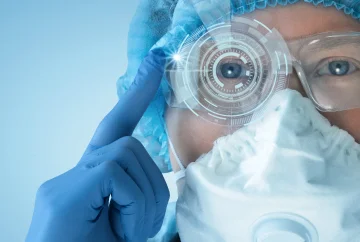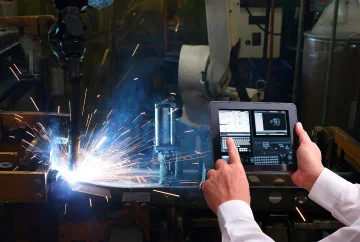Predictive And Preventive Maintenance of Medical Devices With AI & Advanced Analytics
The core technologies that drive predictive maintenance and predictive recalls are primarily similar - and more importantly, rely thoroughly on the IoMT to forecast a point of failure or suboptimal performance of a device or an asset in deployment remotely.
To do this, the real-time data streams collected from devices are warehoused - and this data is then used by AI and machine learning (ML) algorithms to scan for anomalies in the incoming data streams. These anomalies are then compared to the data footprint of the devices as they function in the optimal state. The information delivered by this system is enriched by making it a constantly evolving one - which means that each issue is labeled, and new instances of failure become a learning point for the algorithm.
By identifying an impending failure or deviation from optimal function, service engineers can trigger a batch or a device recall and deliver software patches if the reason for failure is not a hardware replacement. In the latter case, the engineers and service teams can collectively identify the maintenance routine and send the on-site engineers on a single trip to the deployment site while assuring the client of a repair within an anticipated timeline.
Enterprises with a more significant digital maturity will ultimately automate such processes end-to-end - thereby requiring the inputs of engineering teams only on the most complex points of failure. Therefore, predictive maintenance can improve asset efficiency, minimize the cost of service and loss while significantly enhancing device uptime.
But what happens when things go wrong at the site?
Remote Servicing: Need of the Hour
While predictive maintenance can help MedTech enterprises take out high costs and downtime from their service offerings, the global pandemic has brought a stronger emphasis than ever on the need for touchless servicing capabilities. While software patches can be delivered effortlessly over the network, hardware repairs can be delivered remotely, too - with the proper assistance from the manufacturers using the right bridge.
Augmented Reality (AR) and Virtual Reality (VR) have delivered promising results in this area's more significant manufacturing industry. Here, AR and VR can simplify the collaboration process between the ecosystem partners and customers in the value chain. However, AR and VR capabilities will ultimately depend on the degree of digital maturity and security of the bridges between the links in the value chain.
Moreover, the right AR capabilities will inject information derived from the connected device under repair into the serviceman's field of vision in real-time. Such collaboration models have made it easier to
deliver servicing capabilities remotely while enriching the customer experience and keeping a stressed healthcare system functional during peak demand levels.
Concluding Words
Takeaway 1
Service capabilities are becoming critical to pursue financial gains amidst single-digit margins in an increasingly competitive industry. Tightening medical device disclosure and recall regulations amidst various legislations like the FDA and the EUMDR necessitate MedTech manufacturers to pursue these capabilities.
Takeaway 2
Internet of Medical Things (IoMT) forms the baseline of digital maturity levels that make a MedTech manufacturer capable of adopting preventive service capabilities. In addition, a solid data management and data security strategy are crucial to creating scalable and privacy-preserving medical device service capabilities.




